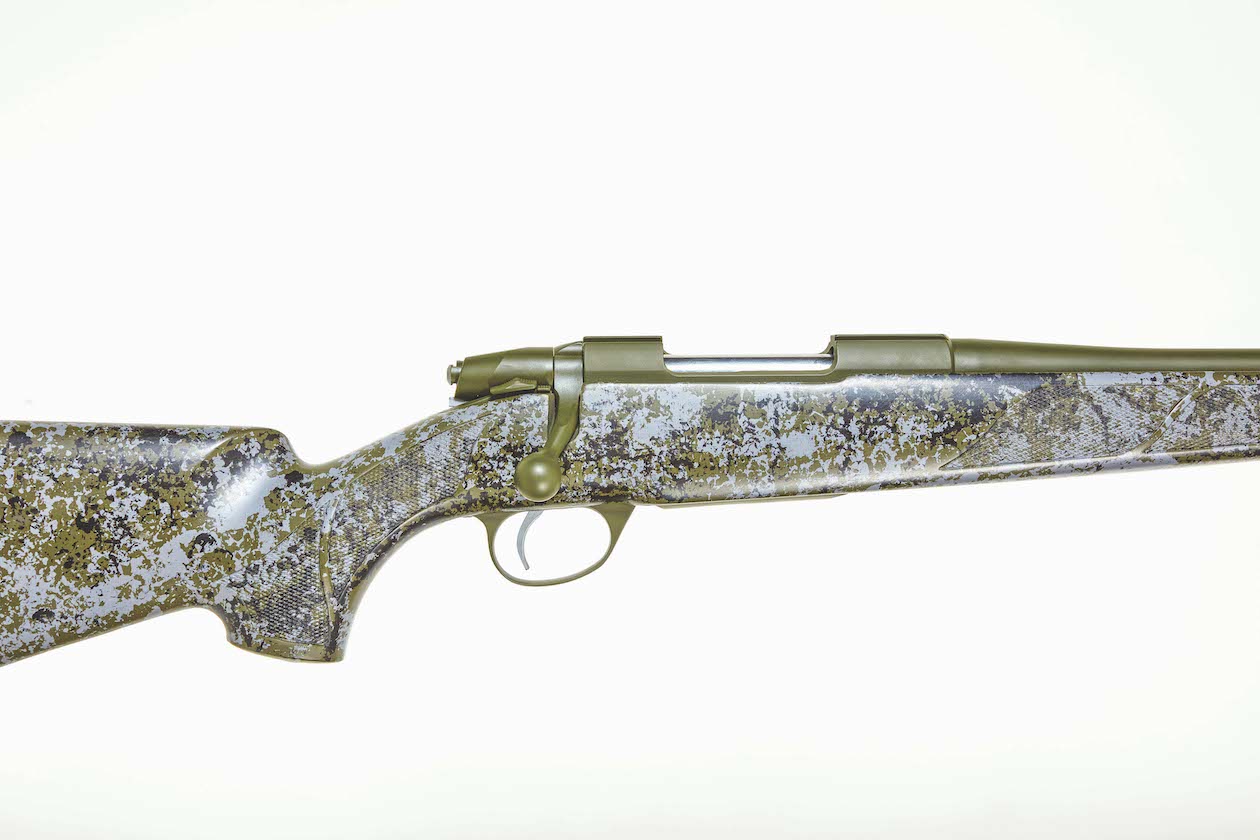Sako M75: why it should definitely be in your sights
Charles Smith-Jones says if you want a beautifully engineered, attractive and highly accurate rifle, then the Sako M75 should be in your sights

Tech specs for the Sako M75
- Country of origin: Finland
- In production 1996-2007
- Action: Bolt
- Stock options:Walnut, laminated or synthetic
- Barrel length 22-26in
- Magazine: Detachable, capacity 4+1, 5+1 or 6+1, depending on calibre
- Left hand version: Yes
- Weight (bare) 6lb 10oz (Synthetic/ Stainless in .308 Win)
- Available in calibres Produced in 22 calibres from .222 Rem up to .416 Rem Mag
- Cost new: N/A
- Cost used: The Sako M75 tends to hold its value well. Expect to pay anything from around £700 but often rather more; much depends on model, calibre and condition. Short action versions may start at less
Sako has long held a reputation for producing high quality rifles since it was formed in 1921. Its origins were in producing military firearms, but it eventually moved on to the creation of other hunting and competition models.
Development of the Sako M75
The development of ‘a dream rifle for devoted riflemen’ began in 1993, and the Sako M75 was eventually introduced three years later, with the name chosen in order to mark the 75th anniversary of the Finnish company.
Although similar to earlier Sako models, the new Sako M75 had a different construction, including a manual ejector and three symmetrical locking lugs. It was marked by its detachable magazine, as previous Sako models (with the exception of the L46) featured internal ones. Production continued until 2007 when the M75 was replaced by the M85 in the Sako catalogue. (Read our list of best shooting smocks .)

The trigger can be adjusted no matter the model
Variations
The M75 was manufactured in a wide variety of configurations to meet the needs and aspirations of shooters, and included wood or synthetic stocking materials as well as a choice between stainless or traditional blued barrels. Left-handed versions were available.
The mainstream was the Hunter, while the Deluxe was top of the range with its high-grade walnut stock, hand cut checkering, and silver-inlaid pistol grip cap. A Safari model in .375 H&H Magnum catered for the most discerning big game hunters, and the Finnlight model with its fluted barrel offered reduced weight and portability for those who travelled light on longer treks or in mountainous terrain.
The receiver was produced in six lengths for different cartridge groups, denoted in Roman numerals on model numbers apart from the SM (Short Magnum). I denoted Short cartridges and V the Magnums.
Popular stalking calibres are contained in III (Medium) and IV (Long) lengths.
The free-floating barrel is hammer forged and the entire bolt, including the handle, is milled from a single piece of cast steel and employs a push feed mechanism.
One of the two approaches to driving the cartridge into the rifle’s chamber, the push feed does not grip the cartridge base until it is fully seated; only then can the cartridge be extracted.
In the alternative system, the controlled feed, the extractor claw grips the cartridge base before it is removed from the magazine so it does not need to be fully chambered to be extracted. Both have their merits but many prefer the relative simplicity of the push feed and the trend with more modern rifles is towards this system.

The receiver comes in varying lengths for various cartridges
Adjustable
The trigger is adjustable on all models between 2 and 4lb, and Sako offered a single set trigger as an optional extra. Also optional were iron sights, as it was recognised that most shooters would fit telescopic sights.
The detachable magazine is double-stacked and reloading can be completed through the ejection port. There is a wide range of aftermarket parts, such as the McMillan Alpine stock fitted to the customised rifle, which has protective and corrosion resistant Cerakote ceramic coatings to the barrel, action, bolt handle and trigger-guard. These rifles are capable of superb accuracy, and with the right ammunition it is reasonable to expect clover leaf groups so long as the shooter does their part. It has long been Sako’s practice to test fire each rifle before it leaves the factory to ensure exacting levels of accuracy.
Additionally, the M75 has achieved something of a reputation for being relatively unfussy about varying commercial loads, a capability that not all rifles can boast. Feeding and extraction is smooth and highly reliable.
If you come across one of the many Sako 75 variants that appeals to you, don’t be put off by the price tag.
These rifles hold their value well so a bargain-bin opportunity will probably be a rare find, but you are still purchasing a beautifully engineered, attractive and highly accurate gun.
Many wonder why Sako discontinued the M75 in the first place and consider it superior to its successor. Others who decided to trade theirs in for a newer make or model have been known to regret it.
Verdict
You are purchasing an attractive and highly accurate gun








